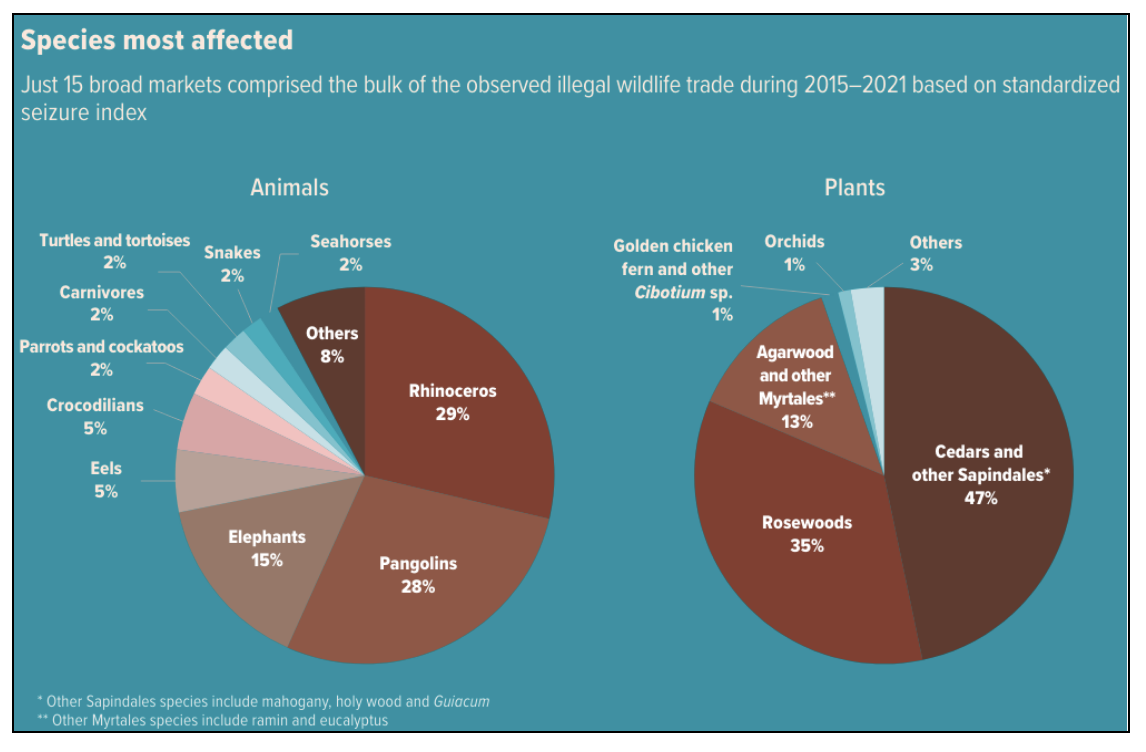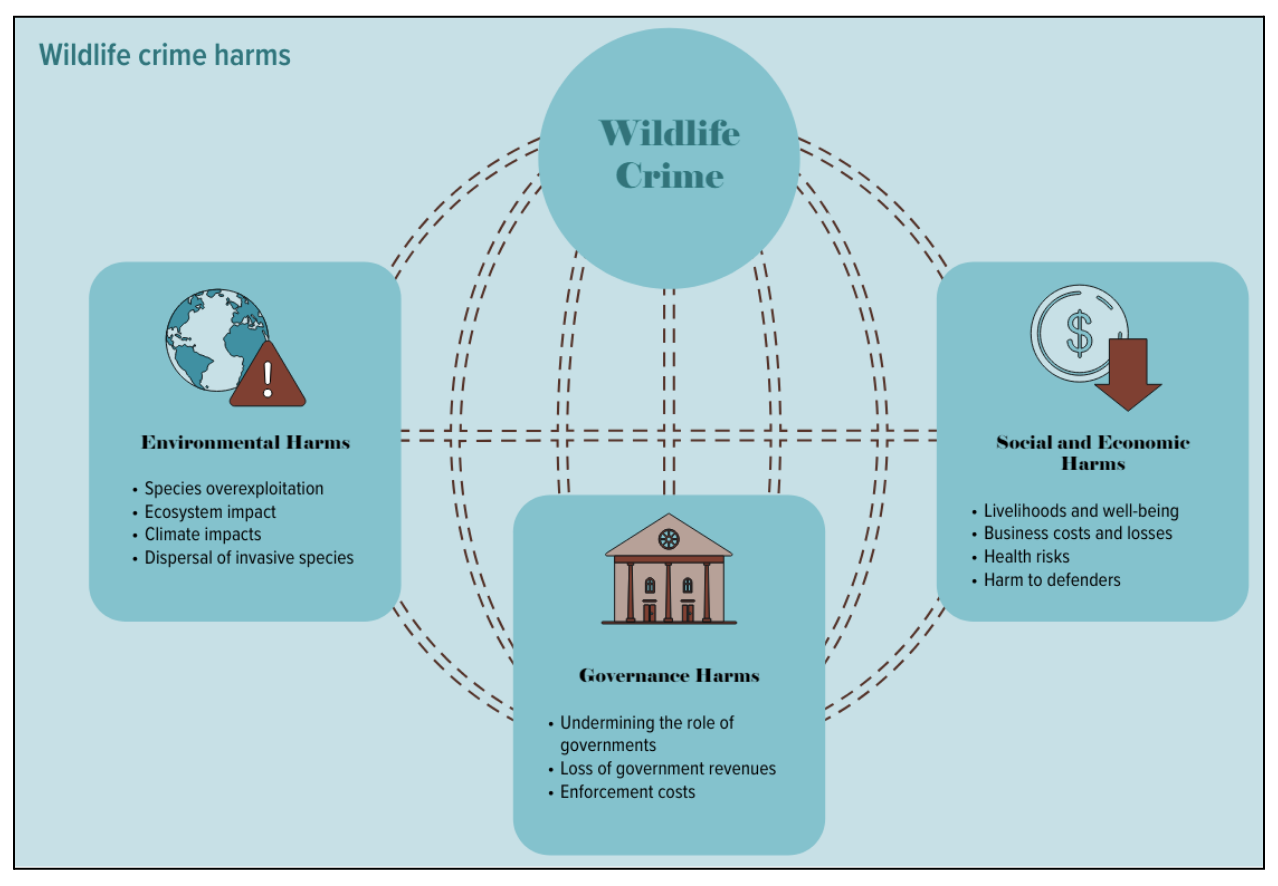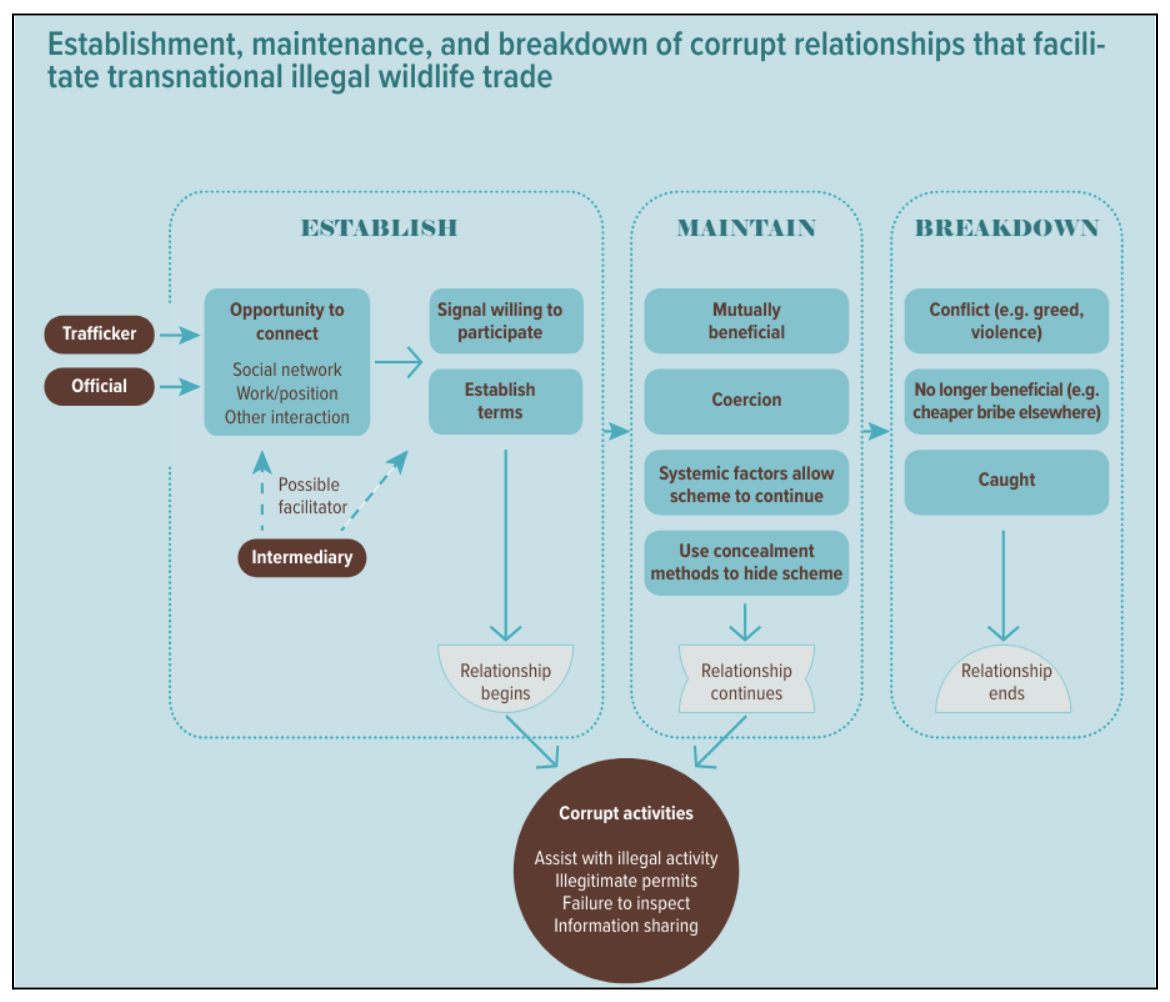GS Paper III
News Excerpt:
According to the 2024 World Wildlife Crime Report, Wildlife trafficking persists worldwide despite two decades of concerted action at international and national levels.
About the report:
- This third edition of the World Wildlife Crime Report, like its predecessors published in 2016 and 2020, probes trends in the illicit trafficking of protected wildlife species.
- It also presents systematic analyses of wildlife crime harms and impacts, probes the factors driving wildlife trafficking trends, and takes stock of current knowledge about the effectiveness of the different types of interventions being put in place to resolve this problem.
- The records of government wildlife seizures that help inform global and thematic analyses in the current report are significantly more comprehensive than was the case for previous UNODC analyses due to the availability of the National Convention on International Trade in Endangered Species of Wild Fauna and Flora (CITES) Annual Illegal Trade Reports.
- Since seizure data can provide only a partial picture of actual wildlife trafficking flows and trends, the current report also draws from a wide variety of additional sources such as academic literature as well as consultation.
Highlights of the report:
- Rhinos, elephants, pangolins, cedars, rosewoods & agarwood are the most affected by illegal wildlife trade.
- The rhino and the cedar were the animal and plant species most affected by the global illegal wildlife trade during 2015-2021.

Key Messages:
1. Wildlife trafficking persists worldwide despite two decades of concerted action at international and national levels—more rapid and measurable progress could be achieved if interventions were informed by stronger scientific evidence.
- As a crude depiction of scale, these seizures involved 13 million items reported by number and over 16,000 tons reported by weight during these seven years.
- For the first time in 2024, UNODC has populated an indicator on progress towards SDG target 15.7 to end the trafficking of protected species of flora and fauna.
- The apparent progress with reductions in poaching and illegal trade in elephant ivory and rhinoceros horn suggests that multifaceted interventions through policy engagement, law enforcement, and market suppression can reap rewards.
- The diversity of institutions and intensity of initiatives working to reduce wildlife trafficking have increased substantially over the past decade, but to make the most of this effort there is a need for more structured coordination between government and multilateral agencies, civil society organizations, academics, and the private sector.
2. With thousands of wildlife species affected and a diverse range of distinct markets driving multiple environmental and societal harms, interventions to reduce wildlife trafficking need to be prioritized and more strategic.
- Wildlife trafficking can play a role in triggering ecosystem-level impacts by disturbing interdependencies between different species and undermining related functions and processes.
- Species depletion and ecosystem disruption caused by wildlife crime can undermine the many socioeconomic benefits that people derive from nature.
- Wildlife trafficking can also have a corrosive influence on governance and the rule of law through corruption, money laundering, and illegal cross-border financial flows.

3. Corruption undermines regulation and enforcement while technology accelerates the capacity of traffickers to reach global markets—criminal justice responses should be modernized, strengthened, and harmonized from source to end markets.
- Organized crime still remains a significant factor in many illegal wildlife sourcing and trading chains.
- Gender is a factor that shapes the roles of people involved in wildlife trafficking. Influencing factors include different experiences of and access to wildlife, expectations within familial structures, and established role differentiation.
- Of particular importance is the need to build robust corruption risk responses for specialized public sector roles such as harvest, breeding and trade permit issuance, animal health and phytosanitary inspection, and control of specialized retail outlets.

4. Wildlife crime is interconnected with the activities of large and powerful organized crime groups operating in some of the most fragile and diverse ecosystems from the Amazon to the Golden Triangle— addressing wildlife trafficking in these circumstances requires a broader strategy to address organized crime as a whole.
- Learning from research into other crime sectors may help with the identification of remedial approaches that might have positive impacts in dealing with wildlife trafficking.



